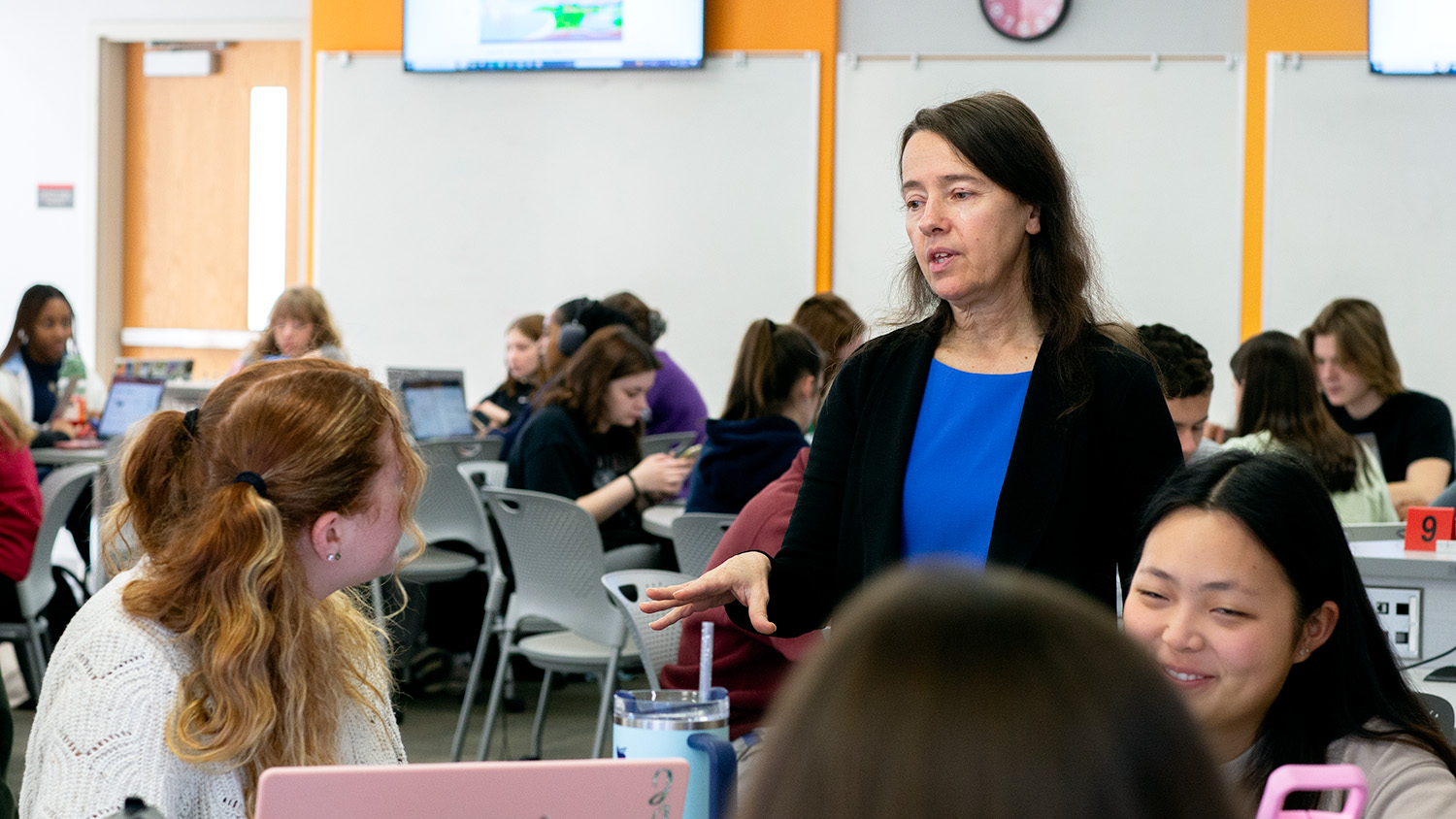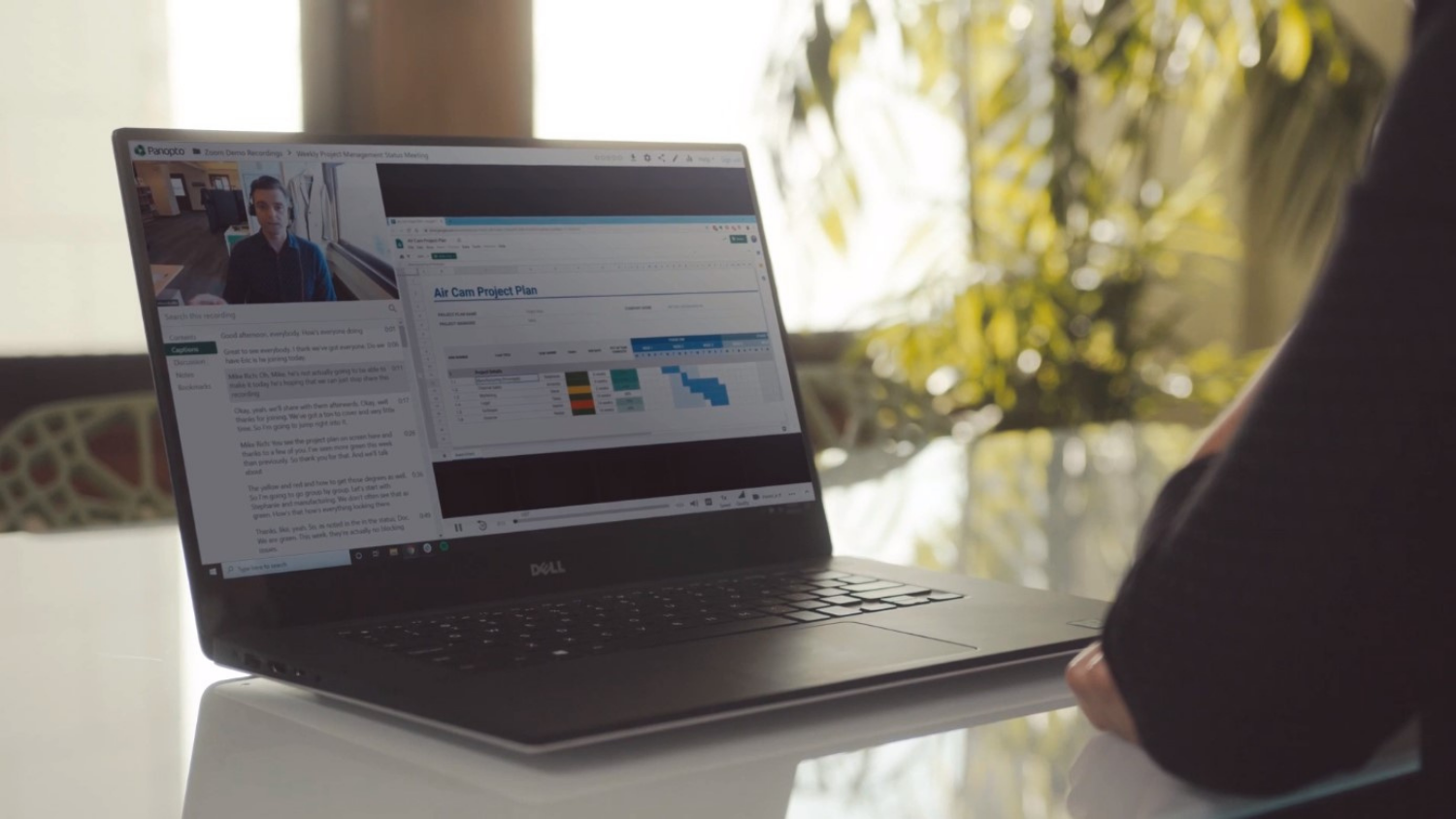DELTA Faculty Fellows Share Ways to Plan Breaks for Students this Spring

DELTA Faculty Fellows pitched in to add tips and ideas for this article. Each piece of advice is followed by the initials of the faculty members who contributed: Kim Allen (KA), Michelle Bartlett (MB), Lina Battestilli (LB), Elaine Bohórquez (EB), Amanda Edwards (AE), Maria Gallardo-Williams (MGW) James McConnell (JM), Annette Moore (AM), Donna Petherbridge (DP), Melissa V. Ramirez (MVR), Angie Smith (AS), and Julianne Treme (JT).
While teaching online is a pivot for most faculty, several NC State faculty members have a wealth of knowledge and experience to share. We asked our current and former Faculty Fellows for ideas to incorporate breaks for students this spring.
Whether you are teaching synchronously, asynchronously or hybrid, we hope these tips will alleviate some anxiety for students and faculty.
Grading and Due Date Flexibility
During these changing times, it can be important to add flexibility in your schedule for both your students and yourselves. See these examples of how faculty are planning to adapt their courses during the spring semester.
- Due-date AND Grading flexibility. Grace goes two ways. Grace for them by allowing due-date flexibility. Grace for me that late work may not have the same level of feedback or be graded as quickly. – MB
- Our lab courses are all asynchronous, and all our assignments are due on Friday nights. Students have a one-week grace period to submit late assignments, no questions asked. –MGW
- In 2020 I started a new policy allowing a one-week extension, no questions asked, on one assignment of the student’s choosing. I also provided repeated general statements (verbal and in writing) of flexibility, encouraging students to check in with me if they were experiencing hardships, letting them know that I’d be extra flexible due to pandemics. I worked one on one with students experiencing hardships on due date changes. – KA
- I’ve also instituted a free make-up quiz day at the end of the semester. If students missed a weekly quiz for any reason, they have one day (24 hours) to get one more opportunity to make up any quiz they missed. Students have appreciated that. – AM
- I teach a small elective course in the spring, and several of those students are also in my larger course. I intentionally planned out my schedules for these courses side-by-side to ensure that exams and deadlines do not overlap. I also added checkpoints throughout the semester for larger assignments (e.g. projects, papers, etc.) to help students stay on track and provide an opportunity for questions or feedback before the final submission. – EB
- I try very hard to build a lot of structure into my courses so that students can develop a routine for how they approach our course — modules are opened at certain times on certain days of the week, assignments are due always at 11 p.m. on Mondays, for example. My goal for Fall 2020 was to build this structure, but always let the students know that due dates could be flexible if they needed to be. With about 250 students in Fall, I only ever had a few students who needed flexibility, but it took the pressure off of them (they knew it’d be okay if they needed to study for physics, or got home late from work, or their internet wasn’t working), and it also took the pressure off of me because I didn’t have to decide when to allow extensions and when not to. And really, I just want them to learn some microbiology! I didn’t want to spend my energy this semester on the when. – MVR
Low-Stakes Assignments
Designing low-stakes assignments for your students can help in many ways. Students get the opportunity to interact with your class content and see where their own misunderstandings are. These assignments can also help a student plan their week and get the accomplishment of checking off a smaller item on their to-do list rather than being overwhelmed by a big project. See our faculty examples and ideas:
- Assign a low-stakes “Find/Track” assignment that prepares them for an upcoming topic. For instance, if I am introducing tariffs soon, I would likely create a forum “Where is your food from?” Students could look in their freezer/fridge and report back on what city/state/country is listed on various food products. This is a relaxed assignment that prepares students for future content. You could also do this in Google Forms to more easily summarize the findings later. – JT
- Share a short, culturally relevant five-minute video that will have a one-question “quiz” to be completed at their leisure. The quiz will be open-ended and the question will be, “Did you like the video?” Any answer will be correct. – JM
- I provide a “questions to think about section/extra credit opportunity” at the end of each module. These questions help focus students’ approach to the module and can be used as guiding questions as they study for the corresponding exam. But it can also be used as an extra credit opportunity. If they answer three questions for any given module at any time prior to the corresponding exam, they can earn up to a point added to their final grade. It’s a knowledge check and extra credit opportunity. – AE
- One challenge of asynchronous online courses is keeping students on track with the content so that they do not get overwhelmed as the exam approaches. Providing weekly modules that include some low-stakes assignments that are scored only for completion, but have a specific deadline, encourages students to keep up with the work without the stress of having these assessments be for a grade. The added benefit is that these assignments also serve as a self-assessment for students to gauge their understanding well before the exam. I do this with knowledge checks and homework assignments for each module and then finish out the week with a low-stakes open note/book graded quiz that provides students with more opportunities to earn points while practicing how to apply module content to solve problems. – EB
- I have 4-5 reflection/check-in activities throughout the semester. These are low stakes for students — they get points for completing them. I ask them to think about how they are approaching the course, what course resources that they are using and finding helpful, etc. But the reflections are so valuable to me. I can ask students for feedback on course content, design, delivery, new course materials I’m trying out for the first time, new assessment formats. I also ask students questions about how things are going overall, how they’re managing during the pandemic, what technical challenges they might be facing (like internet connectivity). And I get to ask silly questions just for fun – like is cereal a soup? It’s a chance to just get to hear from and connect with students. – MVR
Promoting Self-Care
We have all been run down by this pandemic, and it can be important to practice and support self-care. Here are some ways that you can advocate for self-care in your course:
- I created an optional self-care module (take-a-breath module) in Moodle. It takes advantage of the NC State Book activity and includes resources such as videos and readings. – MB
View the infographic about the take-a-breath module.
- In week 4 of 5 of the summer session, we incorporated a self-care week and created a self-care assignment to offer an intentional pause in the semester. We had students do a brief self-check-in to assess their current well-being during the multiple pandemics. Then, offered another check-in after the week was over to assess how their chosen self-care practice impacted them. For this week, students can press the “pause button” and reflect on their total wellness. Then, during the week, students documented a self-care practice/activity. We invited students to take a picture (or capture an image or some representation of the self-care practice to their comfort level) to share with the class using Jamboard for the class to learn even more self-care ideas and strategies. A hidden bi-product of this was that students connected and bonded over similar self-care strategies and shared videos, websites, resources and spots to check out in the future. Since it was a cohort model for this class, I believe this week of self-care helped this cohort connect on a deeper level. Also, we can model for our students by sharing how we are taking a break and caring for ourselves as well. – AS
- Thanks to Angie Smith’s presentation during DELTA Summer Shorts, I added a Wellness Block onto my Moodle main page. I update it each week with microbiology coloring pages, guided meditations, polls to just check in with how students are feeling that week, links to current counseling services on campus (picture here). Also, I place important student support links on the main Moodle page and direct students to them often: Pack Essentials, Libraries, Campus Community Centers, etc. – MVR
- I begin every class day with a positive meme and then have students break into small groups to have discussions on the topic. One of the topics we discussed was, “How do you take care of yourself?” and another was, “What do you do to relieve stress?” For the stress one, we also listened to a podcast. After the class, I shared these questions in a Google Form as an assignment so all of them would complete it, downloaded everything to a Google Spreadsheet, made a copy of it, removed all of their names and then shared it back with them so they would have all of the information. I received nice feedback from them soon after. The responses from students are in Spanish but I’m happy to translate them to English and share copies. Here are the links to the documents.: “How to Take Care of Yourself” and “Stress.” – JM
Approaching Wellness Days
Now that spring break is being spread throughout the semester, how will you give your students a break on these ‘Wellness Days”? Here are how some faculty are approaching it:
- My plan for asynchronous days is to change due dates so that there is nothing due before or immediately after the wellness day. My synchronous plan is to use a combination of the following in my intro and senior courses in place of a synchronous meeting near a wellness day. – JT
- Our lab courses are all asynchronous, and all our assignments are due on Friday nights. For the spring, the week when Friday is a wellness day we will not have an assignment due, so effectively students can take the week off from the lab. – MGW
- I’m teaching synchronous Spanish courses this spring but decided that I will make two days asynchronous and coincide with either the day before or after a wellness day so that the students can have a bit more of a break. – JM
- I plan to build the wellness days into both my synchronous and asynchronous classes. Not only will there be no assignments due those days, but I plan to build time into the syllabus so students can take a break from course work overall. I will encourage them to take a break from the computer — from watching videos, lectures and reading online sources. – AE
- For the upcoming Wellness Days in the spring, there are no classes scheduled. However, to make these true Wellness Days, I also will not schedule exams or deadlines for the day after a Wellness Day either. This required some adjustments to my spring schedule plans, but planning the course to ensure that students have nothing due for my class on or immediately after a Wellness Day is my way of trying to give them a true break for that day. – EB
Engaging Students
Looking for new ways to engage your students next semester? Check out these great ideas of how students can engage with the content in new ways.
- Assign “connection days” in which you assign them a podcast/article/video of an event that is in the news and connects to concepts you have discussed. Ask an open-ended question that allows them to take it in any direction they would like (and is easy to grade based on completion). As an alternative, if it is a video/podcast, you could create a PlayPosit and sprinkle a few questions throughout to get them thinking. “Twitter days” (or social media or another form): ask students to summarize the tweets of someone in your field in the last week. This could expose them to researchers they would not ordinarily know and gives them an avenue to discover others in the field based on the person/organization you choose. – JT
- I have included two participation forums for the purpose of allowing students to make connections between what is going on in the outside world and the course material. One forum asks that they find an article, which can be from any news source (I also have a newsfeed included in the Moodle course site), and provide a brief summary and discussion of how it supports or contradicts what they’ve learned in the course. They also have to provide a response to one of their classmates’ posts. I include a guest interview as part of a participation assignment. The interview relates to multiple parts of the course, so they are asked to find an article or news piece that relates to what is discussed in the interview and further the discussion on that topic and then also engage with one of their classmates’ postings. – AE
- Because everything is online now, sharing group projects with the rest of the class required a different approach to the traditional gallery walk. This semester, I had students create three-minute elevator pitches to present and explain their group project to the class. These videos were posted to Flipgrid, which allows students to comment on each other’s videos (in writing or with a video) and also has an avenue for me to provide private feedback to each group’s submission. It had the added benefit of giving students the chance to be creative with how they “pitched” their project idea. – EB
- In the general student center, I add a forum titled “Cyber Cafe” for students to connect, share, highlight current happenings, and share resources with one another. Since March, giving students choices and options with regard to how they prefer to demonstrate their competence within a particular topic. For example, offering not only paper submissions, but also narrated PowerPoints, video submissions, Padlet, Flipgrid, and other options for sharing content through assignments. Providing options creates agency for students and empowers them to embrace the way they share their work. – AS
- A group project is part of my course. Groups are formed based on the students’ stated availability to meet, yet student comments in reflection assignments showed that some groups still struggled to schedule times to meet. In response, I am building in two synchronous class sessions with the sole purpose of using Zoom Breakout Rooms for groups to work together on their projects during class time. – EB
Summary
With so many people experiencing Zoom and pandemic burn out, your efforts to give students a break may go a long way to provide some stress relief in 2021.
One of DELTA’s leaders, Donna Petherbridge, shared a note from a student, “I can’t thank you enough for understanding that many of us are working, parenting, facilitating virtual learning, and caring for loved ones while attending grad school. This is a weird time in the world and you made it OK to be human.”
Petherbridge adds, “It reflects what I think we have to remember as teachers — we are dealing with humans who have real lives, real challenges, real hurts; and with the stress of the pandemic upon them, even the best students are struggling at times, and miss deadlines, and forget to communicate because they are so overwhelmed. We have to remember people over process!”
If you would like to share your tips, please tweet us at @NCStateDELTA.


